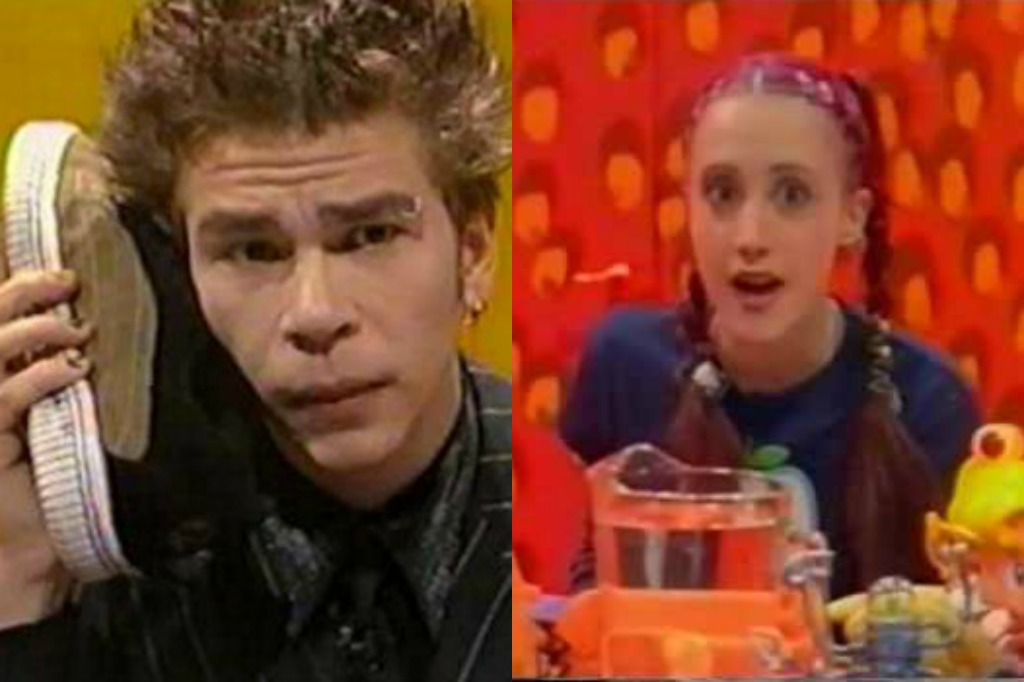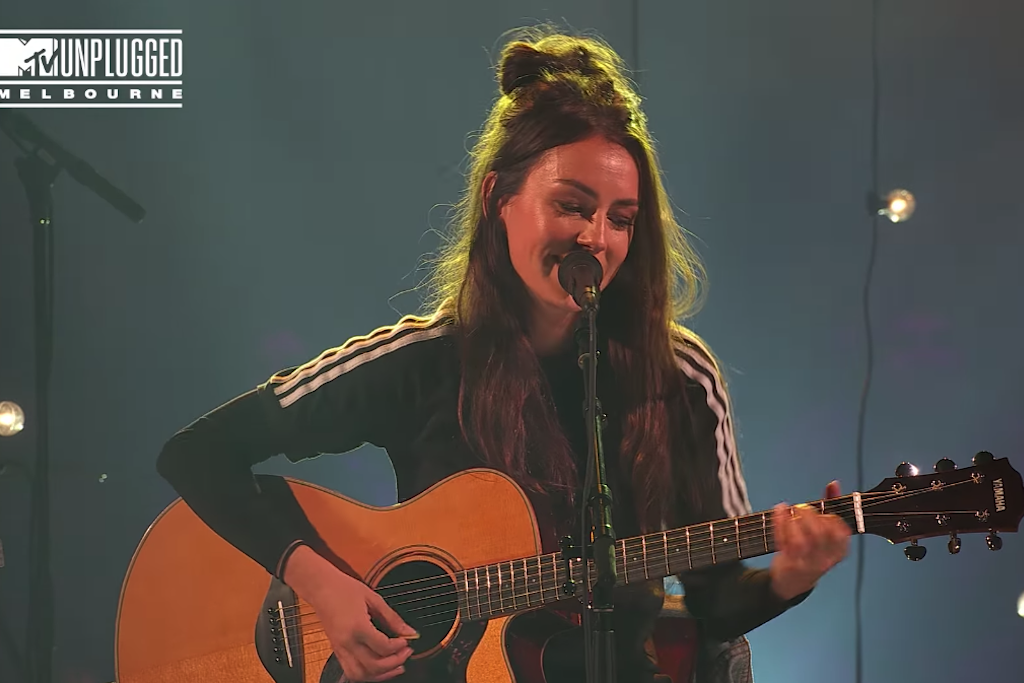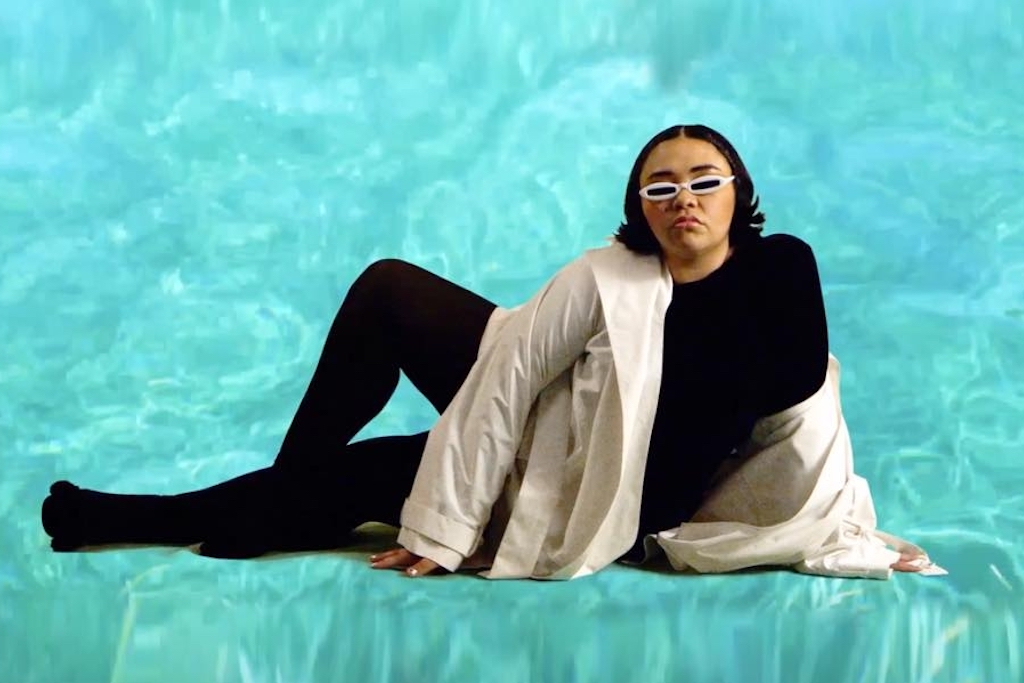What Is The Point Of Live Music On TV In 2018?
We all say we want a 'Recovery' reboot or more live music on TV, but would it even work?

Since its 20th anniversary in 2016, whispers of a Recovery reboot have consistently made the rounds.
And while the ABC is quick to quell rumours, fans continually fall into a nostalgic nose-dive while remembering how the show nursed their Saturday morning hangovers from 1996-2000. Back then, there were live sets from The Living End, The Avalanches, Frenzal Rhomb and more turn-of-the-millennium favourites. But what would it look like in 2018?
It’s a question worth asking — last year we even tried to will something into existence by asking ex-Recovery hosts Jane Gazzo and Dylan Lewis for their dream line-up.
Which is all cute-and-well, but we avoided the hard part of the question: in 2018, what does television offer live music? Given how the way we discover music has been decentralised by the internet (first by forums and dedicated blogs, then by playlists and algorithms), it’s questionable whether television can offer opportunities that can’t be found elsewhere.
The question, of course, can only be answered through practice, and this year has seen a couple of new, dedicated live music shows pop up on Australian television, including the Adelaide-aired Jam Live and MTV Unplugged. But are punters actually fronting up and watching what they say we’re all missing? Or would they be better off trawling YouTube for rips of Recovery, and would bands be better suited elsewhere?
Australian TV Has Always Had Live Music
While Australia’s cultural memory for live music television is largely restricted to Countdown and Recovery, there’s a much richer, dense history of shows on our shores.
We’ve had live music on TV since Australia had TV — though even back in 1956, Accents On Strings and Campfire Favourites proved too expensive to make more than a few episodes of, a foreshadowing of the trend to come.
While there’s been notable successes across the decades, Countdown is by far Australia’s longest living live music show, running from ’74-’87. In a retrospective piece, The Conversation argued Countdown hit an audience due to host and creator Molly Meldrum’s infectious enthusiasm for and knowledge of Australian music, regardless of genre or sub-culture.
Recovery had a similar vibe, which helps explain the nostalgia surrounding it: fans miss it like a friend.
“I know our show connected with so many kids,” ex-Recovery host Jane Gazzo told Music Junkee. “I hear stories constantly about people who didn’t know who they were until they saw a certain band or artist on the show and suddenly their weird world made sense to them. For kids seeking their identity and their place in the world back in the ’90s, it was such an important show.
“Kids formed bands and outlets by which to express themselves, inspired by what they saw on Recovery — or they discovered their sexuality or found out there was a world outside of their country town or whatever…. When you’ve spent years talking to people whose lives you changed, you realise this kind of vehicle is such an important cog in Australian popular culture.”
But since the 2000s, most dedicated live music shows have lacked that connection — or, at least, lacked the metric of ratings to keep them on-air. Shows like MTV’s The Lair and TRL proved short-lived, and live music was shunted to stints on breakfast television and Rove Live.
Maybe it’s just a natural progression: the misfits that saw themselves reflected on live TV can now turn to the internet for connection.
Maybe it’s just a natural progression: the misfits that saw themselves reflected on live TV can now turn to the internet for connection. At the very least, they could still stumble upon deep-cuts on Video Hits (RIP) and Rage, though with the latter there’s always the risk of missing the song’s title and losing a song as soon as you found it.
In 2018, live music on Australian television is a different beast: since the early 2000s, it’s been slowly but surely dominated by talent competitions like Australian Idol and its many successors, including The Voice and X Factor.
Earlier this year, ex-Nightmoves host Simon Lee told Music Network that reality TV had sated audience’s appetites for live music, arguing that a YouTube spiral or Spotify playlist is a much more accessible way to stumble upon new acts.
And he’s not wrong — nobody is pretending that the way we unearth new music hasn’t changed or shifted. But still, does that really mean there’s no room for what TV can offer? Gazzo doesn’t think so, arguing that TV has an unique cultural capital that most broadcasters ignore.
“If you think about some of the most pivotal music television moments, they were all live: from The Beatles performing ‘All You Need Is Love’ on the World Broadcast Satellite in 1967 to Madonna performing ‘Like A Virgin’ at the MTV Awards to Jon Spencer smashing the Recovery set mid-performance,” she says.
“Nobody ever talks about other forms of art or culture in quite the same way. [TV] is such an important medium – and one that seems sadly undervalued by most free-to-air channels.”
In 2018, What Does Live Music TV Offer?
This year, we’ve seen the launch of MTV Unplugged Australia — last month, Gang Of Youths kicked things off, and there’s an episode with Amy Shark on the way this Sunday. It’s the first time the long-standing series has stood on our shores.
Speaking to Music Junkee, MTV Vice President and Head Of Asia Pacific Simon Bates said it’s here to stay.
“It’s a long term initiative,” Bates says. “At the moment, we’ve already locked down three years worth of shows. We’re going to be working and booking artists for 2019 at the moment, we’ll do 12 over three years.”
Bates says the decision was based off a reoccurring complaint with record labels: that Australian music deserves to be seen on TV. To labels, it’s a missed opportunity.
“Everybody was saying the same thing, which is this is not enough music television for our Aussies,” he says. “That just motivated me further to be like, ‘we’re MTV, There’s something we can do to help here’. I definitely went straight to our biggest, most famous brand, which is Unplugged.”
Bates is very happy with the reception so far, saying that the first episode has been seen 184,00 times just via it’s MTV broadcast. Given the show’s also online and will be distributed globally down the line, that’ll only rise, plus there are also plans to release DVDs and audio recordings, too. After all, Unplugged is more than a TV show: it’s an internationally established brand, one that can front up the costs of a complicated live TV recording — and make amends through multiple revenue streams.
Diversify or die is kind of where we’re at. Internationally, there’s few dedicated live music shows beyond Late Night… With Jools Holland, the BBC’s 25-year strong institution.
Over in the US, there’s a lot of live music on TV, but that’s because the late-night circuit offers a far wider audience than anything Australia could. Plus, there’s an entire industry of content-hungry international music sites (Pitchfork, Noisey, Stereogum) to push out those performances to the world.
While Unplugged has a legacy to lean on, most new shows need a ‘gimmick’: unless they’re an event the likes of the SuperBowl or Beychella, live performances on their own struggle to grab our attention.
But by a mile, the cultural peak for music on TV at the moment is ‘Carpool Karaoke’, James Corden’s mind-numbingly popular segment where he drives around and sings with A-list musicians (but not Kanye West, who keeps ghosting).
It’s digestible content, tailor-made to generate headlines. You could be cynical and say the music itself is secondary to personality in Carpool Karaoke, but it’s still providing a way for audiences to connect to music — integrally, it’s a unique connection too, something which you can’t find on Spotify.
While Unplugged has a legacy (and Viacom) to lean on, most new shows need a ‘gimmick’: unless they’re an event the likes of the SuperBowl or Beychella, live performances on their own struggle to grab our attention.
Bates agrees that audiences aren’t necessarily going to sit down to watch a whole performance — or at least, that they want to set their own terms to do so, which is why Unplugged is built to be pushed out across so many different mediums.
MTV Australia recently announced they’re bringing back variety show Total Request Live too, which will feature live performances: with plans to break it down into digestible, shareable videos across social media.
And Of Course, We Have Live Music Every Friday
Of course, one of Australia’s biggest, internationally recognised music institutions has been doing the shareable video thing for a hot minute: ever heard of a little thing called ‘Like A Version’?
Triple j’s cover series has been going viral every other Friday for years, offering a massive platform to Australian acts. It can even become their defining moment for the masses: if you caught the DMA’s at this year’s Splendour, you know that their 2015 cover of Cher’s ‘Believe’ can induce a mini-stampede when played live.
The ABC airs live music, too: this year, they ran Splendour In The Grass TV specials, and last month, aired triple j’s One Night Stand. Speaking to Music Junkee, an ABC representative confirmed they have multiple television specials in the work for Aus Music Month this November, but weren’t quite ready to reveal their plans just yet beyond the Spicks & Specks reunion.
They’re unlikely to revisit Recovery any time soon, though: when rumours swelled again last month, Aunty told Music Junkee they remained committed to “new concepts” around live music, instead of galvanising what worked two decades ago. Which again, seems smart — it’s hard to say Recovery in 2018 could be successful and be the same show, beyond the name. But it does have a spiritual successor, of sorts.
Earlier this year, Jam Live launched on Channel 9 in Adelaide with a five-episode first season. Unlike Recovery, which created a home from the studio, each episode hops between festival and live gig sets from Australian acts such as San Cisco and Stella Donnelly, with a sneaky game of putt-putt golf with Boo Seeka sprinkled in-between. But for creator and presenter Shanelle Franklin, the shows share an ethos.
“Shows that were Recovery and Countdown were amazing for their time, when people were sitting down at a certain time to watch TV, when there was no on demand, there was no streaming internet, that kind of thing,” she told Music Junkee. “Jam Live does a similar thing to what Countdown and Recovery did, because it opened people’s ears to new music.”
Without the backing of the state broadcaster or an international brand, Jam Live is a much smaller affair. It’s a labour of love, one only made possible by Franklin’s hustling for commercial sponsors: now the show’s aired, she’s looking towards arts grants and further sponsors for season two.
It’s also not necessarily trying to expose bands to mass audiences, à la Unplugged. Instead, Franklin’s main hope is that Jam Live lets punters see what they’re missing by staying in, and gets each band a couple more bodies in the crowd.
“The thing is, people that go to live music gigs love it,” she says. “It’s the people that didn’t go that don’t know what that experience was like. You can say to people: ‘Yeah, it was awesome, it was great, it was this, it was that’, but unless you’re there living it, you don’t get it.”
“So [Jam Live] is about being a fly on the wall. It’s to capture the live music experience for you and show you the magic that’s there: the artists pouring with sweat; the audience completely surrendering to what’s in front of them. You can’t emulate that through headphones.”
—
Jared Richards is a staff writer at Junkee, and co-host of Sleepless In Sydney on FBi Radio. Follow him on Twitter.




